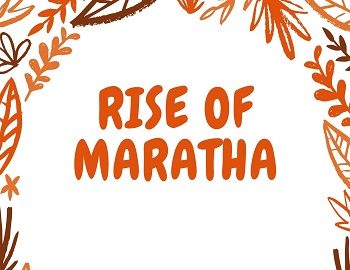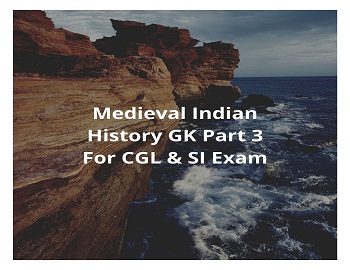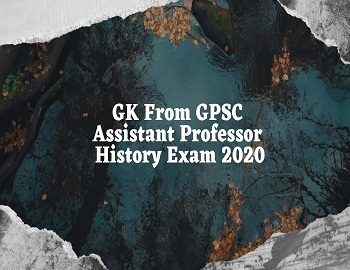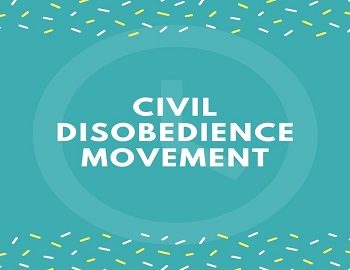Table of Contents
Rise of Maratha:
The rise of Maratha appears to be an important chapter in Medieval historiography. According to British scholar Grant Duff, it was the product of the subversive activities committed in the forest of Sahyadri.
On the other hand, some modern scholars Andre Winck tried to interpret the rise of Maratha power in the context of Fitna. The concept of Fitna was first given by a Muslim scholar Ibn-I-Khaldun. Later, Andre Winck applied this paradigm in the study of Maratha polity. But it doesn’t explain properly the rise of Maratha power in India. On the other hand, some scholars have tried to project the rise of Maratha as a nationalist reaction against a Muslim power but such an argument doe not appear to be convincing.
On deep observation, we find that the rise of the Maratha was the product of a very complex process so more than one factor was accountable for that.
Role of Geographical Location:
Maharashtra or the land of the Marathas is that part of the Deccan which is enclosed on two sides by the Western Ghats running from north to south, and the Vindhya and Satpura range running from east to west. On the western side, the Western Ghats, the hilltops and the broken ranges provided the Marathas with rock forts from which they could easily defy the enemy or repel the invaders. The rainfall is scanty and the soil is not fertile. Hence, the people had to work hard for their subsistence. The Marathas thus grew up to be a simple, hardy race of mountaineers. According to Grant Duff, Geographical conditions suited for guerilla war.
Role of Maharashtra Dharma:
Maharashtra Dharma is supposed to play a great role in the rise of Marathas. Maharashtra Dharma was first mentioned in a text, Guru Charita, belonging to the 15th century. A large number of Saints such as Gyandeva, Namdeva, Tukaram, Ramdas Samartha etc. were associated with Maharashtra Dharma.
Maharashtra Saints gave a new message to the people. They opposed rigid caste system. Although they didn’t demolish the caste structure, they demolished its rigidity.S this phenomenon encouraged social mobility and a new social energy was discharged.
It was from this social mobility that a great organizer and consolidator like Shivaji benefited. Ramdas Samartha, the teacher of Shivaji, founded Dharkari Sect while some other saints were associated with Varkari Sect. Dharkari Sect gave emphasis over proper mix between spiritual life and temporal life. All these factors prepared the base for Maratha power.
According to some scholar, other forms of Hinduism is normally Sahishnu (tolerant) but Maharashtra Dharma appeared to be Jayishnu (inclined for conquest and victory) in its character.
Military Training under the Deccan Sultans:
Another factor that helped the rise of the Marathas was the political and military training that the Marathas received under the Bahmani Sultans of the Deccan. It was their soldierly qualities that led Malik Ambar, a great master of guerilla warfare to utilize their services against the Mughals. In the words of M.G. Ranade, “Thus was the ground prepared partly by natives, partly by religious revival but chiefly by long discipline in arms which the country had undergone under Muhammadan rule for three hundred years”.
Role of Shivaji:
In the rise of Maratha power, even the role of Shivaji worked as an important factor. Just like the rise of Rajputs even the rise of Maratha was a Medieval phenomenon. But we can not explain the foundation of the Maratha state without the role of Shivaji.
Shivaji was a great organizer. He made benefit from the conflict between the Mughals and Deccani states and then he consolidated his position.
Above all, Shivaji was well aware of the fact that presence of some bigger and recalcitrant Deshmukas is a great impedium in the way of a creation of a powerful Maratha state under Shivaji. These Deshmukhs had already enjoyed greater power and prestige under Bijapuri state. So they weren’t ready to submit before Shivaji. That’s why Shivaji tried to curtail their power. He planned to suppress some bigger Deshmukhas with the support of smaller Deshmukhas as smaller Deshmukhas themselves were being harassed by the bigger Deshmukhas. Furthermore, Shivaji adopted two pronged policy against bigger Deshmukhas. On the one hand he suppressed their power and on the other hand he developed matrimonial relationship with some prestigious Deshmukha families so that he would get the better social recognition.
In this way with the proper mix between power and diplomacy, Shivaji became successful in creating an independent Maratha state.









Comments (No)